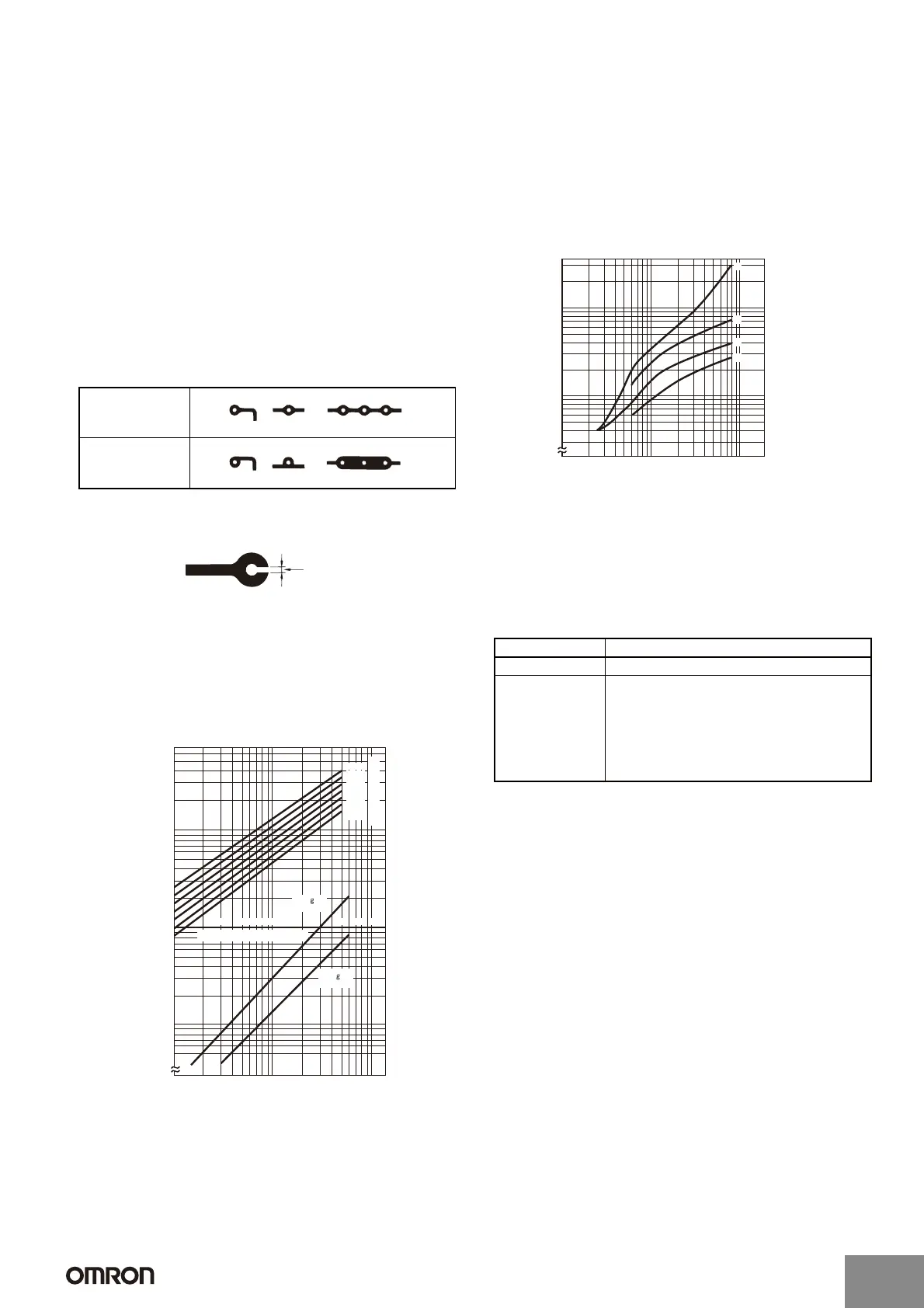B Noise from Contacts
Noise may be transmitted to the electronic circuit when switching a
load, such as a motor or transistor, that generates a surge at the
contacts. When designing patterns, take the following three points
into consideration.
1. Do not place a signal transmission pattern near the contact
pattern.
2. Shorten the length of patterns that may be sources of noise.
3. Block noise from electronic circuits by means such as
constructing ground patterns.
C High-frequency Patterns
As the manipulated frequency is increased, pattern mutual
interference also increases. Therefore, take noise countermeasures
into consideration when designing high-frequency pattern and land
shapes.
G-6 Shape of Lands
1. The land section should be on the center line of the copper-foil
pattern, so that the soldered fillets become uniform.
2. A break in the circular land area will prevent molten solder from
filling holes reserved for components which must be soldered
manually after the automatic soldering of the PCB is complete.
G-7 Pattern Conductor Width and Thickness
The following thicknesses of copper foil are standard: 35 μm and
70 μm. The conductor width is determined by the current flow and
allowable temperature rise. Refer to the chart below as a simple
guideline.
Conductor Width and Permissible Current
(According to IEC Pub326-3)
G-8 Conductor Pitch
The conductor pitch on a PCB is determined by the insulation
characteristics between conductors and the environmental
conditions under which the PCB is to be used. Refer to the following
graph. If the PCB must conform to safety organization standards
(such as UL, CSA, or IEC), however, priority must be given to
fulfilling their requirements. Also, multi-layer PCBs can be used as a
means of increasing the conductor pitch.
Voltage between Conductors vs. Conductor Pitch
(According to IEC Pub326-3)
G-9 Securing the PCB
Although the PCB itself is not normally a source of vibration or shock,
it may prolong vibration or shock by resonating with external vibration
or shock. Securely fix the PCB, paying attention to the following
points.
Correct Examples
Incorrect
Examples
0.2 to 0.5 mm
Break in land
2
1
0.5
3
5
7
2
3
5
20
30
50
7
10
100˚C
75˚C
50˚C
40˚C
30˚C
20˚C
10˚C
0.03 0.05 0.07 0.1 0.3 0.5 0.7 1
305 /m
2
35 μm
610 /m
2
70 μm
Cross-sectional area (mm
2
)
Permissible current (A)
Conductor width (mm)
Temperature rise
Mounting method Process
Rack mounting No gap between rack's guide and PCB
Screw mounting • Securely tighten screw.
Place heavy components such as Relays on
part of PCB near where screws are to be
used.
• Attach rubber washers to screws when
mounting components that are affected by
shock (such as audio devices.)
100
70
50
30
20
200
300
1,000
2,000
3,000
500
700
0.1 0.2 0.3 0.5 0.7 1.0 2 3 5 10
Conductor pitch (mm)
C
A
D
B
A = Without coating at altitude of 3,000 m max.
B = Without coating at altitude of 3,000 m or higher but lower than 15,000 m
C = With coating at altitude of 3,000 m max.
D = With coatin
at altitude of 3,000 m or hi
her
Rated Voltage between Conductors (Vdc)
http://www.ia.omron.com/
C-12
(c)Copyright OMRON Corporation 2007 All Rights Reserved.
Artisan Technology Group - Quality Instrumentation ... Guaranteed | (888) 88-SOURCE | www.artisantg.com
